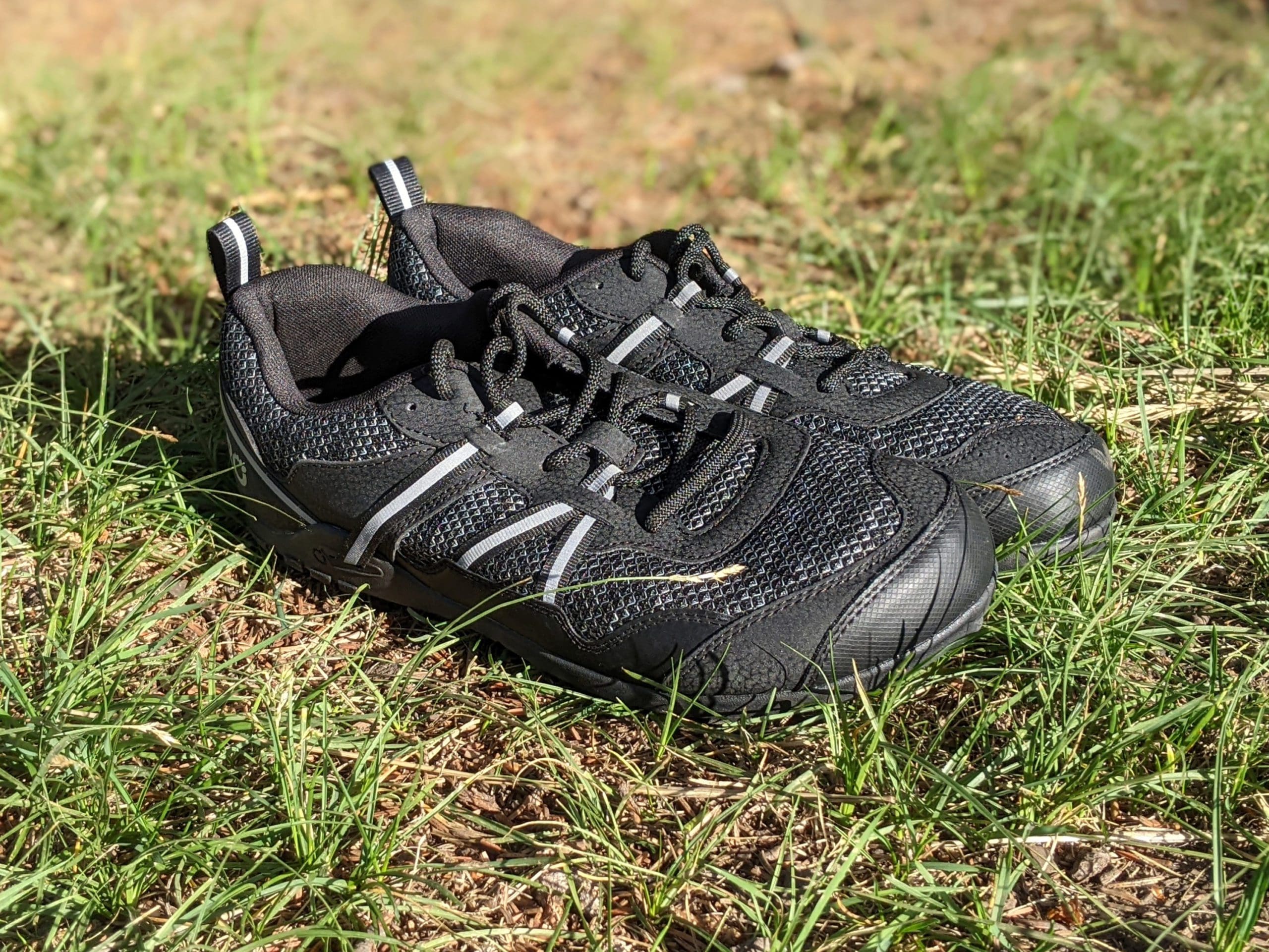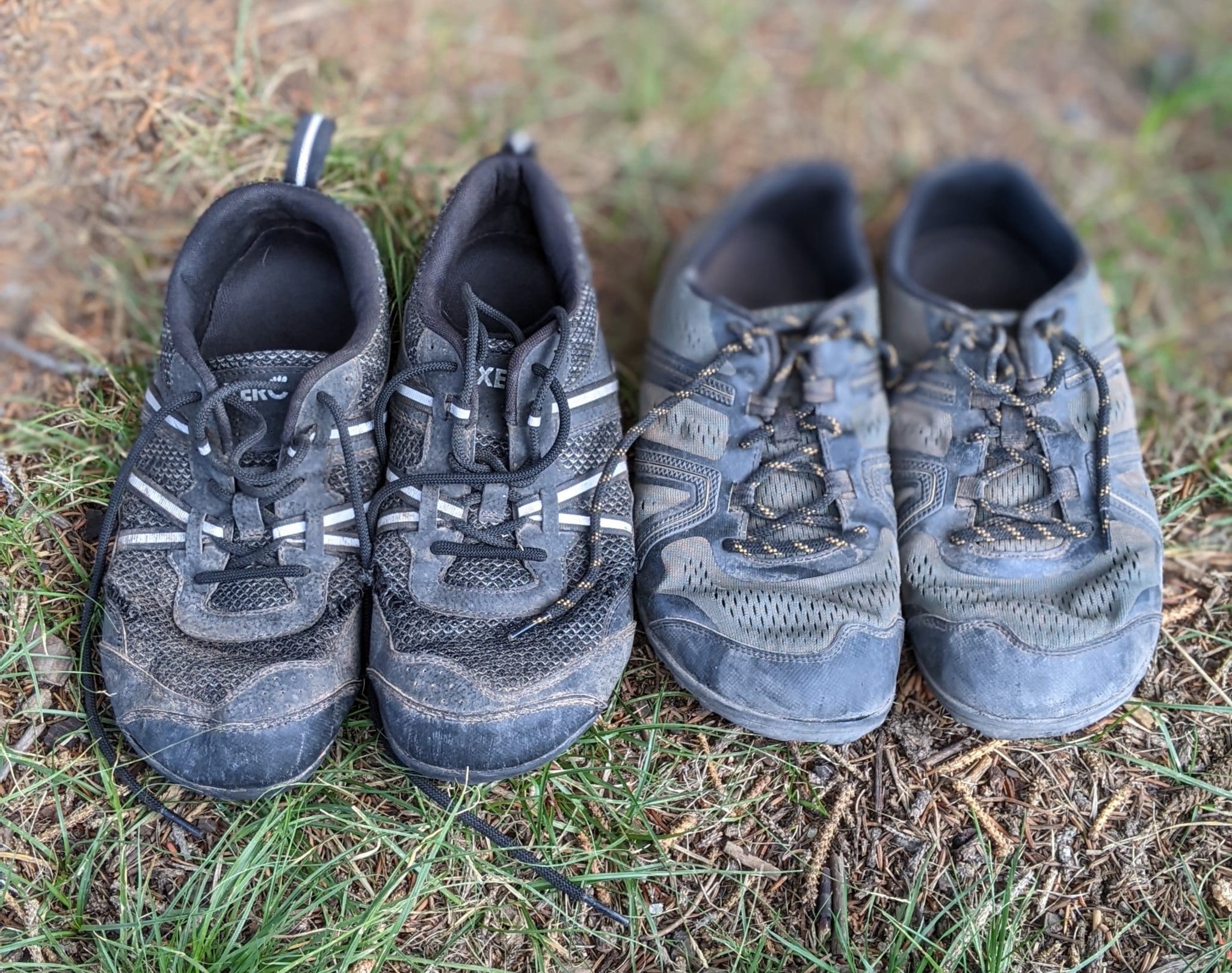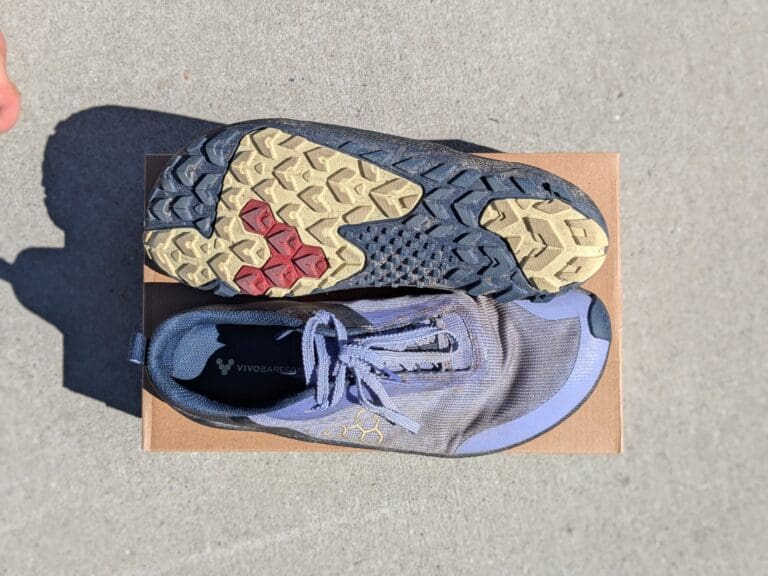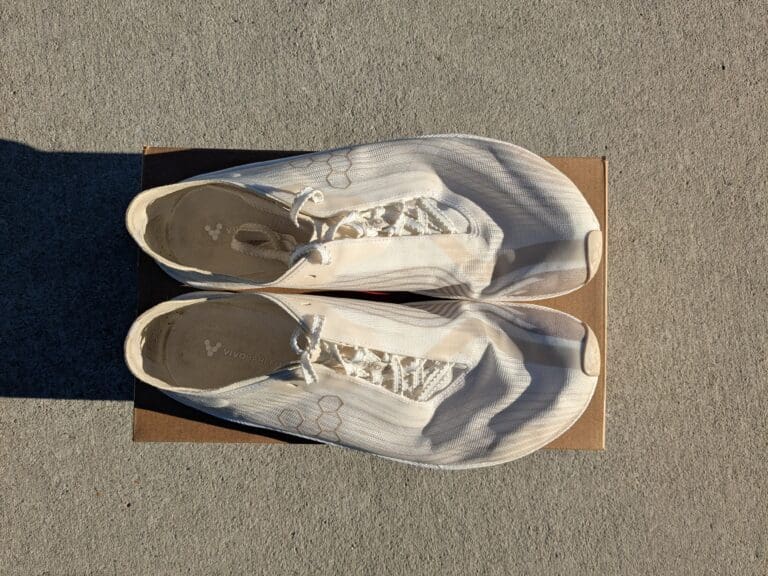Affiliate Disclosure: By clicking through the links on this page and purchasing the products, you’ll be helping me out. This is done because I receive a kickback from the sellers at no extra cost to you! Thank you so much for supporting us!
When it comes to minimal trail running shoes, there aren’t many options on the market. Xero Shoes knew that needed to change, so they released 2 completely different trail options.
In this review, I will go over the basics of the Xero Shoes Mesa Trail and the Xero Shoes Terraflex II, highlight the key differences, and explain the different situations in which these shoes excel.
For more in-depth reviews of both shoes, check out the full reviews in the links below.

Xero Shoes Terraflex II
The minimal trail shoe with ultimate protection

Xero Shoes Mesa Trail
The closest to barefoot you’re going to get.
Aside from the size discrepancy, the overall shape of the shoes are similar. If you’ve read reviews about the Mesa Trail, you’ll know they fit small. And that’s why you should buy at least ½ size larger than your standard (I’ve even gone a full size larger). Whereas the Terraflex II fits true to size.
Nice deep and moderately wide toe boxes. Often barefoot shoes lack depth even if they have width, but that’s not true here. With a sturdy protective toe box on the Mesa Trail and Terraflex II, the structure holds the toebox high above your toes to offer, freeing wiggle room.
The material differences set these shoes apart in performance but also fit. Because the Mesa Trail is aimed at the performance-based lightweight market, the thin materials mold perfectly around the foot, offering a sock-like feeling. The Terraflex II is made with durability and protection in mind, and the thick overlays contribute to a stiffer, more secure fit. Meaning there’s less freedom in barefoot movement.
If your feet are low in volume or not too wide, you should look at other brands. While Xero shoes aren’t the widest on the market, they are pretty voluminous and broader than other brands, such as Vivobarefoot.
Lockdown is near perfect for the Mesa Trail, and the Terraflex II isn’t too far behind. Because the materials around the ankle cuff are relatively flexible on both shoes, it’s possible to lock your feet tight without worrying about slippage. This benefit is further enhanced by the Mesa Trails, where the super flexible materials hug the foot like a sock.
Which minimal running shoe is for you?
Take a quick 5-question quiz to identify the perfect minimal running shoe for your feet! You'll get both road and trail options based on your answers!
The Mesa Trails are for you if you want the authentic barefoot feel. With only a few millimeters of stack height difference, you’d expect the feel in both shoes to be similar. But that couldn’t be further from the truth. The flex in the Mesa Trails are the best I’ve ever put on my feet.
Need more protection? Opt for the Terraflex II. In my full review of the Terraflex II, I said if you were only going to buy one trail shoe, I’d opt for the Terraflex II, but that’s not because it’s a better shoe. It has all the protection you may want on rough technical trails. If you took the Mesa Trails on rugged trails, you might find it a little uncomfortable.
To transition from traditional shoes, the Terraflex II is a good option. With slightly less flex and a little more stack height, the Terraflex II performs more like a traditional shoe than any other minimal shoe. There are pros and cons to this, but if you’re transitioning, it could be a positive.
When it comes to outsoles, the Terraflex II takes home the trophy. With both shoes having a 5000-mile sole guarantee, you’d expect both outsoles to be similar. But I’ve found the Mesa Trail to have a much softer rubber and wear much quicker. I’ve got no doubt that the Terraflex outsole will continue far past the Mesa Trail.
Sadly the upper on my Terraflex II and Mesa Trails broke down after 400 miles. While those numbers aren’t bad for other brands, much of the shoe could have continued past this. For the Terraflex, I’ve managed to continue with a ripped forefoot, but the separation in the Mesa Trails meant I had to buy another pair.
Watch for the Terraflex II insoles and midsole packing out. I took the Terraflex shoes out on the Colorado Trail with me, where I moved for 30 miles daily. Obviously, they would break down fast in those conditions, but I found the insole was causing huge issues with sore spots. I’d suggest swapping these out soon after purchase. On top of that, the minimal foam in the Terraflex II was packed out, and the ridge of the seem was exposed. I believe if the insoles were better quality, this would not have been an issue.
In the end, the decision is easy.
- If you want protection and you’re going to be running on rough technical trails, choose the Xero Shoes Terraflex II.
- If you’re looking for a true barefoot experience, choose the Xero Shoe Mesa Trails.
I enjoy both shoes, but the Mesa Trails’ flexibility wins out on nearly every run. And if I know I’ll be running hard downhill on rocky terrain, I’d consider the Terraflex II.

Xero Shoes Terraflex II
The minimal trail shoe with ultimate protection

Xero Shoes Mesa Trail
The closest to barefoot you’re going to get.




I love the mesa trail. I’m hesitant to buy the Terraflex II since they seem much “stiffer” for a barefoot shoe. However, my problem is that running the 1/2 mile through the grass to the trail near me in the Mesa Trail leaves my feet soaking with the morning dew. Does the Terraflex have any water resistance that would keep my feet a little more dry?
It does have a “little” water resistance because the material is just thicker in general. I jumped through a few puddles in the terraflex, and I didn’t get wet feet, but if the moisture is persistent, I imagine your feet will still get wet. AND it’ll take longer for them to dry.
Add that point to the fact that the terraflex is stiffer, I’d advise you stick with the Mesa trail.
The only other option I’d suggest is the Vivobarefoot Primus trail? The upper is more “plastic” like, and resists water better. Just not the fit differs a little, it’s not quite as deep as a Mesa Trail.
https://barefootrunreview.com/vivobarefoot-primus-trail-ii-fg-review/
Hi, did I get this right, that the mesa ii has a thicker stack than the terraflex, in total? Greets and thanks for the review.
Oh no, sorry.
The Terraflex II has a 6.5mm rubber outsole, whereas the Mesa Trail II has a 5.5mm rubber outsole. But what’s more, the Terraflex has an extra 3mm of foam midsole, too, making it 9.5mm in total.
Mesa Trail II = 5.5mm
Terraflex II = 9.5mm
Don’t forget the insole adds a few mm too, but that flattens over time.
Since you mentioned the insoles in the Xeros being less than stellar, can you recommend any specific brands/models for replacement?
I usually just switch out the insoles with anything I’ve got hanging around. Vivobarefoot insoles seem to last for long while for me. You can buy them from their website.
Let me know if you find anything better!
Do you feel confident doing 30 miles per day wearing Mesa Trail
Yeah for sure. This is the shoe I moved to after the Terraflex started to break down on me during my Colorado Trail Journey. Now ~1000km in, the Mesa Trails are looking rough, I still keep reaching for them! 🙂